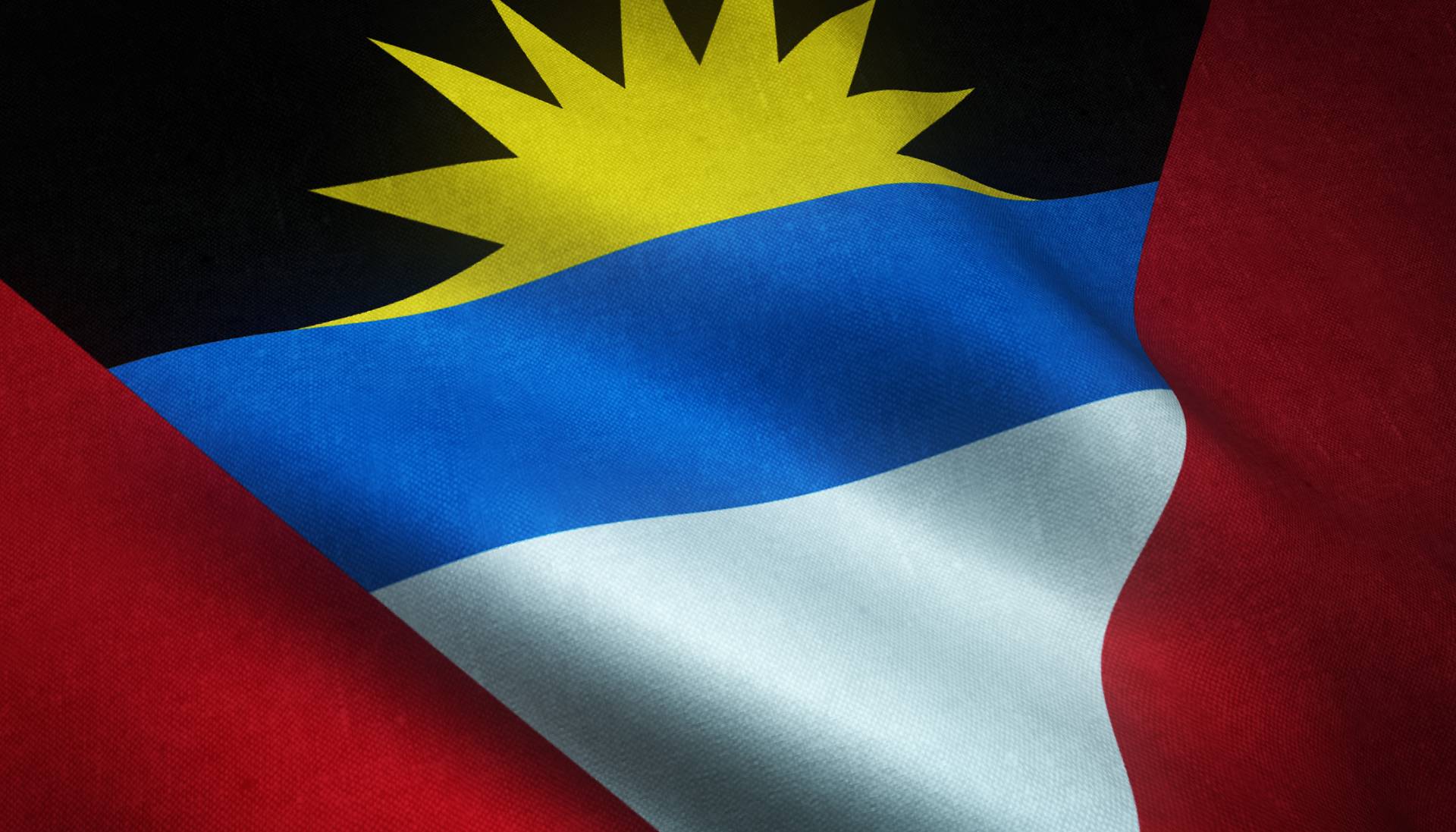A national flag is a symbol of a given nation, and the colors can represent the past struggles, hopes, and aspirations of the citizens. These flags have different colors and shapes to represent different aspects of the country’s culture and history. They also all have a special meaning that expresses what the country stands for.
Countries that have red, white, black, yellow, and blue flag settled on these colors because they represent their culture and core values well. Today we’ll talk about countries with different colors of flags. Here is a list of flags that fit this description. Different countries choose different colors for their flags to represent different things. For example, red may represent fire in our nation and bloodshed by freedom fighters in another country.
Flag of Antigua Barbuda
The flag of Antigua and Barbuda features a yellow sun in the center, surrounded by red and blue stripes. The blue stripe represents the energy and enthusiasm of the citizens, while the red stripe represents the country’s African heritage. The “V” shape in the flag is said to represent victory. The colors in the flag represent the sun, the Caribbean Sea, and sand, which all symbolize Antigua and Barbuda’s location on the Caribbean.
The Antigua and Barbuda flag was officially approved on February 27, 1967. The top of the flag features a pineapple, representing the country’s fruit industry. The shield is supported by a pair of deer, referencing the country’s hunting tradition. The blue sky and the White Sea are displayed in the design on the flag.
History of Antigua and Barbuda Flag
In 1966, a flag design competition was held in Antigua and Barbuda. A local artist, Mr. Reginald Samuel, developed and designed the Antigua and Barbuda flag within minutes. The flag features a blue field with a white cross in the middle, based on the country’s coat of arms. The flag’s design was unique and it perfectly represented the values and expectations of the nation. The winning design was perfectly embedded with the chosen anthem, coat-of-arms, and slogan. In 1994, it was unanimously decided that seven full points of the sun should represent the six parishes plus.
Antigua and Barbuda gained full independence from the United Kingdom in 1981 and chose to continue using the flag introduced as an associated state in 1967. This choice was controversial at the time, as many people felt that the new country should adopt a new flag. However, the Antigua and Barbuda people were firmly in support of their flag, and it has been used ever since.
Antigua and Barbuda Meaning and Design
The flag of Antigua and Barbuda is made up of a horizontal black, light blue, and white stripe, with a blue stripe on the top. The stripe is divided into three unequal parts, with the red part in the middle. The flag is designed to have a length-width ratio of 2:1. The flag’s context is made up of three inverted triangles, each of which is filled with one of the country’s three main colors. The triangle features a horizontal line dividing the colors, with the base of the triangle at the top of the flag.
The red represents the lively and passionate character of the people of the nation, who are determined to follow their destiny in exactly the same way as it has been set for them. This vibrant color associates the country with energy, the sun, the Caribbean Sea, and its wonderful beaches. The rising sun represents a new era of success and growth that the nation has enjoyed since independence. The V-shape is symbolic of victory, as well as the country’s rich African heritage. Finally, the black represents the richness of the soil on the island nation, which is a vital part of its heritage.
Flag Of Eswatini
The national flag of Eswatini is a rectangular design with three blue bands running the length of the flag. The top band is blue, the middle band is red, and the bottom band is blue-edged in yellow. The red band of this flag features an oxe-hide shield covering two spears and a staff decorated with feather tassels of the widowbird. This shield is placed horizontally across the flag’s white background.
The blue and red shield and the two spears represent protection from foreign adversaries. The blue color signifies peace and stability, while the red color represents the country’s past struggles. The yellow color on the flag represents the mineral resources of the country. The shield, spears, and staff represent protection from the country’s enemies, while the black and white colors of the shield are meant to portray black and white people living in peaceful coexistence. The flag has a width-to-length proportion ratio of 2:3, which symbolizes the country’s commitment to peaceful coexistence among all its people.
Eswatini is one of the smallest countries in Africa, but it has a rich historical background. After gaining independence from the British Empire in 1968, the country adopted its own flag to represent its freedom. The flag features a yellow field with a black cross on a green background. The cross is meant to represent the country’s Christianity, and the yellow and green are meant to represent the country’s natural resources. The flag is also symbolic of the country’s unity and its commitment to democracy.
History Of The Flag Of Eswatini
The flag of Eswatini was adopted on October 6, 1968, following the country’s independence from Great Britain on September 6, 1968. This demonstrates the country’s longstanding commitment to freedom and democracy. The Swazi flag design is inspired by a military flag that was given to the Swazi Pioneer Corps by King Sobhuza II in 1941. The flag has a distinctive green, white, and black design, and it represents the country’s rich culture and history. The Swazi National Council eventually decided to adopt the flag as the country’s new national flag. The flag was first raised on April 25 and then registered with the College of Arms on October 30, 1967.
The Backstory
The Swazi Pioneer Corps was training to help the Allies with their invasion of Italy, so King Sobhuza II entrusted three princesses with creating a special flag for the military. On a blue background, yellow and red horizontal bars are visible. The blue bar represents the ocean, and the yellow and red bars represent the country’s national colors. The shield in black and white is displayed on a white background, with a staff and two spears at its corners. This flag was presented to them as a reminder of their country’s military traditions.
In 1954, a political network was created to organize public gatherings, and its flag was based on the one flown by the Swazi Pioneer Corps. In 1967, the Swazi National Council decided to use that as the new national flag, and it was hoisted for the very first time on April 25, 1967. On October 30, 1967, some minor creative adjustments were made to the flag. However, on September 6, 1968—Independence Day—nothing changed.










